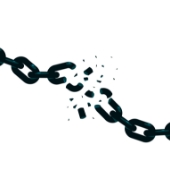 Most iPad users are satisfied with their devices, but some wish to install apps unavailable on the App Store or tweak their device’s performance beyond Apple’s limits. To achieve this, they resort to jailbreaking, which can have unforeseen and unfortunate consequences. This article explores the concept of jailbreaking and why it can be a bad idea.
Most iPad users are satisfied with their devices, but some wish to install apps unavailable on the App Store or tweak their device’s performance beyond Apple’s limits. To achieve this, they resort to jailbreaking, which can have unforeseen and unfortunate consequences. This article explores the concept of jailbreaking and why it can be a bad idea.
What is iPad jailbreaking?
iPad jailbreaking, or rooting, is the process of bypassing manufacturer and carrier restrictions imposed on the device. This involves a privilege escalation attack — a cyberattack designed to obtain unauthorized access into a system — that replaces the factory-installed operating system with a custom, often unlicensed, operating software. This reconfiguration allows users to install third-party software and modify system settings, which are actions that are typically off-limits in the default state of an iPad.
5 Consequences of jailbreaking your iPad
While jailbreaking does grant greater control over your iPad, it does come with certain risks. Here are five reasons you should consider before jailbreaking your device:
1. Warranty implications
Apple considers jailbreaking a breach of contract. Consequently, the moment you jailbreak your iPad, your warranty becomes null and void. Apple will no longer offer any support for hardware or software issues with your jailbroken device.
2. Battery life drain
Jailbreaking an iPad can lead to faster battery depletion. The reason behind this lies in the suboptimal optimization of many apps created by the jailbreaking community, which often consume more power compared to Apple-approved software.
3. Heightened security risk
iPads operate apps within a closed environment or sandbox, preventing official and licensed apps from affecting the broader system. However, when you jailbreak your iPad, these protective sandboxes are eliminated, enabling unauthorized apps to make unrestricted alterations to your device’s system and gain access to your private files.
Jailbreaking also exposes your iPad to increased security threats, as it bypasses Apple’s built-in security framework, rendering your device more susceptible to malware and other forms of cyberattacks.
4. Update challenges
Jailbreaking your iPad means you’re stuck with its existing iOS version. Consequently, automatic updates for the operating system, official apps, and security features are no longer accessible. You’ll have to rely on updates developed by the jailbreaking community and other independent developers, which may not be as reliable or secure.
5. Device instability
Jailbroken devices often suffer from performance issues and instability. Because apps for jailbroken devices aren’t rigorously tested and optimized, jailbreaking your iPad increases the likelihood of crashes. It can also lead to built-in and third-party apps freezing and, in some extreme cases, rendering your iPad unresponsive, a condition known as “bricking.”
How to determine if your iPad is jailbroken
If you’ve acquired a secondhand iPad and are curious about its jailbreak status, here’s how to check:
Press the iPad’s Home button to return to the main screen, which will display the keyboard.
Type “Cydia” into the search bar. If “Cydia” appears in the search results, it indicates that the iPad has been jailbroken.
While jailbreaking your iPad may initially seem tempting, it can result in frequent performance issues and make your device an easy target for cybercriminals. For a safer and more reliable experience, it’s advisable to refrain from jailbreaking your iPad.
Your iPad’s security and performance may depend on the choices you make regarding jailbreaking. If you have further questions or want to understand the risks better, you should reach out to an IT specialist today.



